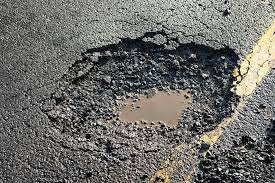Updated May 6th, 2024 at 12:08 IST
Self-Healing Roads: NHAI Explores Cutting-Edge Technology To Combat Potholes | See How It Works
The use of self-healing roadways could greatly extend their lifespan and lower the requirement for ongoing maintenance.
Advertisement
The National Highways Authority of India (NHAI) is exploring cutting edge technology that has the potential to revolutionize road maintenance across the country. The subject of discussion is self-healing roads, a novel way to deal with potholes, which are a major source of traffic accidents and fatalities in India. This is how it will operate.
Potholes: Irritation And Risk
Potholes are both an irritation and a risk. In 2022 alone, potholes caused 4,446 accidents that claimed 1,856 lives in India. The National Highways Authority of India (NHAI) is now prepared to use cutting-edge methods to solve this issue.

Cutting-Edge Technology
As per reports from DD News, this cutting-edge approach will empower roads to mend themselves through the application of a groundbreaking asphalt variant. This innovative method, according to DD News reports, will enable roads to repair themselves by applying a unique kind of asphalt.
What Is Asphalt?
Roads, parking lots, railway tracks, ports, airport runways, bike lanes, walkways, and play- and sport-areas are all built and maintained with asphalt, which is a combination of aggregates, binder, and filler. Crushed rock, sand, gravel, or slags can all be utilized as aggregates in asphalt mixtures.
Self-Healing Roads: How It Works
A unique kind of asphalt that has the capacity to mend itself is used on self-healing roadways. Steel fibers and epoxy capsules are mixed into this asphalt to seal minor fractures and stop water seepage. In order to initiate the process and successfully repair the road surface, heat is applied to the steel fibers using an induction machine, which melts and rebinds the asphalt.

Benefits Of Self-Healing Roads
The use of self-healing roadways could greatly extend their lifespan and lower the requirement for ongoing maintenance. In addition to lessening traffic congestion, this will save lives by lowering the number of accidents brought on by dangerous road conditions.
Self-Healing Roads Technology
Steel wool pieces are mixed into the bitumen as part of the self-healing asphalt technique to improve conductivity. The bitumen may easily reattach itself to the gravel and stones in the asphalt when heated by an induction machine. This effectively counteracts the impacts of ongoing traffic wear and tear by allowing the asphalt to self-repair.
Self-Healing Roads Globally
In the Netherlands, 12 roads with self-healing asphalt have undergone testing; one of these has been operational and accessible to the public since 2010. This technique is even being considered for use in the United Kingdom.
The budget for 2024–25, which is in line with the budgetary and revised estimates for 2023–24, includes Rs. 2,600 crore from the road transport and highways ministry for road repair. The National Highway Authority of India (NHAI) is investigating a cutting-edge and revolutionary technique for road maintenance. Self-healing asphalt is used in the technique, which may help with the pothole problem.
Advertisement
Published May 6th, 2024 at 12:08 IST